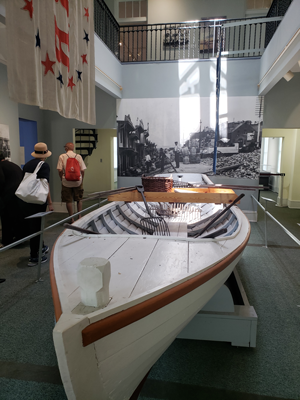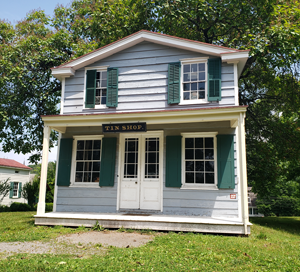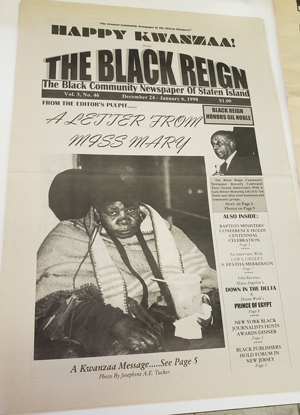June 19th, 1865 is a significant date in United States history. On that date 156 years ago, the last group of African Americans in Galveston, Texas were informed that they were no longer enslaved. As a result, June 19th—or Juneteenth—was a de facto holiday that was acknowledged and celebrated by the African American community. It was not until 2021 that Juneteenth was codified as a national holiday, which made this year’s celebrations extra special.
To mark the occasion, part of the NYG&B team attended an event that was hosted by The Afro-American Historical & Genealogical Society (AAGHS) Jean Sampson Scott-Greater New York Chapter and co-sponsored by The Afro-American Historical & Genealogical Society New Jersey Chapter. We went on a trip to Historic Richmond Town on a warm and beautiful Saturday afternoon with the hopes of learning about how African American have contributed to communities on Staten Island throughout history.
African Americans & Staten Island’s Economy

were used to gather oysters in the waters of
Staten Island.
Before we began our tour, we were treated to a brief lecture on Historic Richmond Town and the lives of African Americans on Staten Island before and after the end of slavery in New York State in 1827.
It was clear after the presentation that the narrative of African Americans on Staten Island—like the rest of the country—stretched beyond slavery and agricultural work. An example given during the talk was the nearby community of Sandy Ground. This neighborhood was a free black community that was established mere months after New York abolished slavery. Many of the people that lived in this community had valuable skills that developed the Staten Island economy, which is a story that was brought to life when we were taken to the museum.
Once known as Coccoles Town due to the many oysters and shells in the Freshkills waters, Richmondtown’s economy had a robust oystering industry. In the museum we got to see artifacts that made oystering possible. The staff informed us that African Americans contributed to this industry directly.
Many free African Americans traveled northward from Maryland and settled on Staten Island during the 1800s. Maryland was and continues to be known for its seafood because oysters and other shellfish are plentiful in the Chesapeake Bay. Many of the African Americans that moved to Staten Island were skilled in oystering and used those skills to contribute to the local economy and the growth of communities around Richmondtown like Sandy Ground.

everyday tools and items that the community
used. This building was a General Store before
it became a tin shop.
Staples of the Community
After seeing artifacts at the museum, we went inside a tin shop building.
Tinsmithing was an important trade, especially in places like Staten Island during the colonial era.
Tools and household items made of tin were durable and inexpensive to produce. American culture from the colonial era until the mid-nineteenth century did not have the money to dispose of material often like we do today.
Instead, they bought and reused items until they withered beyond repair. Some cups and pans could last up to ten years. This made the role of tinsmiths important in society for they made the tools and items that families needed most.
Some of the tinsmiths on Staten Island were African Americans; making them a fixture of their communities.

glimpse of the past by showing us what
occurred in Staten Island’s African American
community and what they cared for
during their era.
Countless Stories in the Research Library
Lastly, we toured the library and archive of Historic Richmond Town. For researchers of history and genealogy, this building contains a treasure trove of documents with stories both told and untold.
Along with personal accounts from a black woman that lived at Sandy Ground to African American newspapers, we get a look at the day-to-day life of black Americans on Staten Island.
Getting a chance to see what our ancestors experienced informs us about their lives while we negotiate our own legacies in telling their stories.
Historic Richmond Town, like many sites across New York and across the country, is remedying the problem of the lack of black voices in their exhibits and artifacts.
The history is clear: the contributions of African Americans are integral to the development of some of the most prosperous communities in the country. In weaving the history of African Americans into the fabric of historic sites, many more people can see their legacies much clearer while telling a more accurate and complete historical narrative.
Your Support Matters
All can support Historic Richmond Town’s efforts in preserving and telling the stories of African Americans that left behind important footprints throughout the history of Staten Island. The public can help by engaging with the Staten Island Historical Society and supporting their work in telling more black New York stories.
You can also begin researching these stories by viewing the collections at Historic Richmond Town. Together, we can share in the empowerment and self-discovery that comes with conducting genealogical research.
